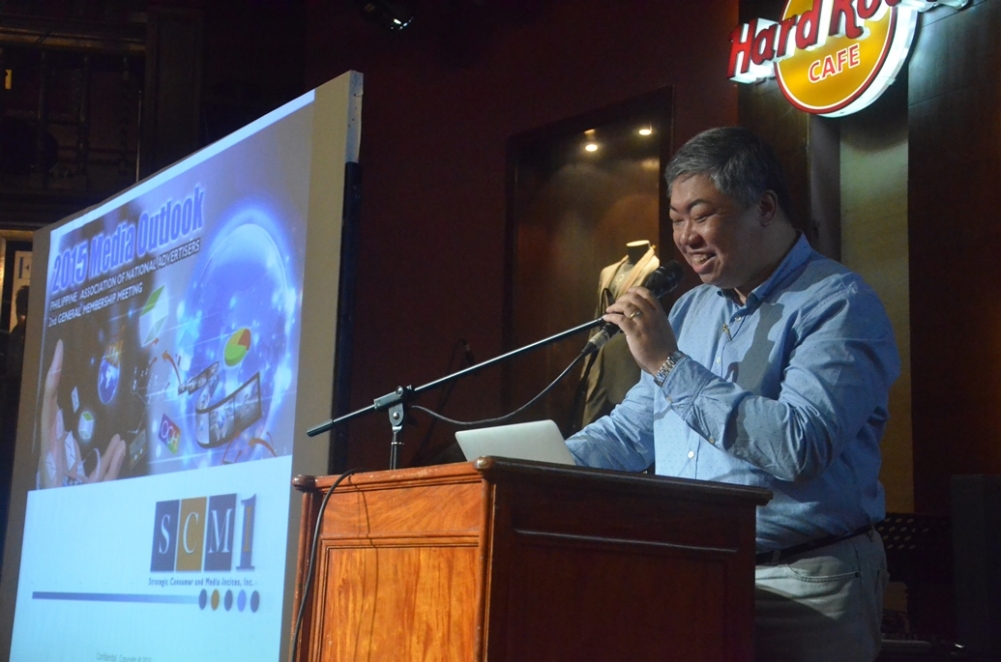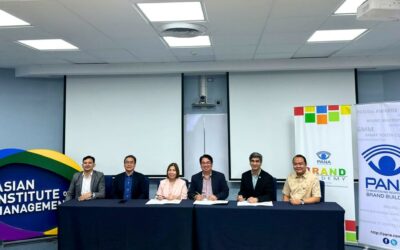
The study by Strategic Consumer and Media Insights Inc. (SCMI) covers urban Filipinos from 20 cities representing all 13 regions in the Philippines. Magazines, DVDs/VCDs, cinema and newspapers trail behind the top five in the urban group’s media touch points.
There are 39,480,000 urban Filipinos or urban consumers aged 10 and above, shares SCMI senior advisor Jay Bautista at this February’s PANA GMM.
“Millennials are the best way to describe the urban population – more than 60 percent of the population are below 39 years old,” he says.
What is interesting about the Philippines is the country’s twin primetime TV viewing hours, noon and evening, yet viewing minutes have declined a total of one hour since 2010 even as pay TV or cable subscription is on the rise.
Radio, consistently one of the top three media resources, has moved down to fifth place but still reaches a considerable 20 million in urban Philippines.
As with TV, radio has two primetime hours: early in the morning and between 10 pm to 1 am at night, the latter of which grew from the popularity of a new breed of midnight DJs pioneered by the likes of Papa Jack.
Papa Jack of 90.7 FM Love Radio has won Yahoo! Awards for best male DJ in 2013 and 2014.
There are now more mobile phones than people in the Philippines, and there is an accompanying shift toward the use of smart phones.
“All of the shift in terms of mobile will be driven by the millennials or the young consumers,” Mr. Bautista says.
The Philippines currently ranks 12 among countries where mobile is a common media platform. This 2015, smart phone penetration rate in the country is expected to reach 50 percent of the population.
Almost half (49 percent) of Internet users in the Philippines are found online every week. The digital Pinoy is made up of 84 percent 10- to 19-year-olds, 65 percent 20- to 29-year-olds, 42 percent 30- to 39-year-olds, 25 percent 40- to 49-year-olds and 12 percent 50-year-olds and above.
Eighty-one percent of Internet users belong to classes A and B, 68 percent from class C and 45 percent from classes D and E.
“This is prior to the free Internet campaign (launched lately by telcos),” says Mr. Bautista.
“I assume when we conduct the new study the D and E would breach 50 percent already and make online sort of a mass medium in terms of size compared to the other traditional platforms.”
The top reasons Filipinos go online include social networking, academic study or research, downloading, emailing, gaming, watching videos, personal research, online chatting, video conferencing and reading the news.
Filipinos are becoming multi-screen consumers: mobiles “brighten” the morning commute to work, PCs “dominate” working hours while tablets are “popular at night”, Mr. Bautista observes.
These multi-screen consumers are also on their devices while watching TV, because people like to talk about what they watch. In the UK, 40 percent of tweets during Twitter’s peak time are related to TV.
The emergence of “total video cross platform management” sees content, an event or a show, available on multiple platforms – access to more screens equals more time spent on every device equals more time consuming the content.
The London Olympics of 2012, for example, increased audience’s viewing time from four hours and 19 minutes on TV to eight hours and 29 minutes by making content available on TV plus PC/laptop, mobile and tablet.
For out-of-home, one of the most exciting trends to arise in the Philippines is facial recognition. One such technology is the Vidicube, which could measure the age, determine the gender and assess the engagement of the viewer of a digital ad. Facial recognition has the potential to optimize out-of-home.
The top five media touch points engaging urban Filipinos is a combination of traditional media and new technology. Content would always be a significant driver of media consumption, and by customizing content for multiple platforms, each medium has the power to amplify the others.
[nggallery id=358]



